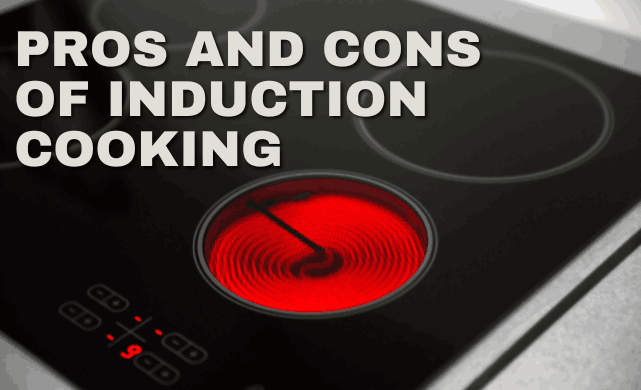There's been quite a buzz recently in the restaurant equipment world surrounding induction cooking. If you've been thinking about switching from gas or electric to an induction cooktop, today we're going to explore the advantages and disadvantages of induction cooking.
Advantages of Induction Cooking
Safety
If you're unfamiliar with induction cooking, here's a quick rundown. Unlike traditional methods that use open flames or electric burners, induction cooking relies on electromagnetic fields to generate heat directly within the cookware itself. This means that the cooktop only heats where the pot or pan touches it, significantly reducing the risk of burns or accidental fires. Additionally, since induction cooktops require magnetic cookware, there's no danger of gas leaks or explosions. This makes induction cooking a safer option compared to both gas and conventional electric setups.
Precision and Control
One of the standout features of induction cooking is how precisely you can control the temperature. While electric ranges can take time to adjust temperatures, induction cooktops offer instant heat adjustment similar to gas stoves but with more precision. This allows chefs to achieve consistent results every time they cook, which is particularly beneficial when preparing delicate dishes.
No Gas Required
Another major advantage of induction cooking is its lack of reliance on gas. Unlike gas stoves, which leave behind grease and pose risks like leaks and explosions, induction cooktops eliminate these concerns entirely. They provide a cleaner, safer environment for your kitchen while maintaining high performance levels.
Easy Installation
Installing an induction cooktop doesn't have to be complicated. Available options include portable countertop models or drop-in units designed specifically for integration into existing countertops. These portable units can even be placed anywhere as long as there’s access to an electrical outlet, making them ideal for catering events or temporary setups.
Disadvantages of Induction Cooking
Cookware Compatibility
A notable downside of induction cooking is that it requires specific types of cookware. For effective operation, the cookware needs to be magnetic, meaning materials such as stainless steel or cast iron work well. Unfortunately, non-magnetic metals like aluminum won’t function properly with induction technology. If you already own a collection of mismatched cookware, this could mean investing in new pieces.
Dependence on Electricity
As induction cooktops operate solely on electricity, they need to be positioned close to reliable power sources. This may limit placement flexibility if your kitchen layout isn't conducive to accessing outlets easily. Furthermore, during power outages, you'll lose functionality unless you have backup generators.
Higher Initial Cost
Although induction cooktops save money over time due to their energy efficiency, the upfront cost tends to be higher than standard gas or electric alternatives. However, considering factors like reduced cooking times and improved accuracy, many users find that the long-term benefits outweigh the initial expense.
Are you ready to try out induction cooking? At Cook’s Direct, we offer everything you need to get started. Visit our website at cooksdirect.com to browse our extensive selection of induction cooktops, including portable countertop models, induction buffets, and more.

Keywords: induction cooking
1-5MM Silicon Carbide Provided For Deoxidize
high hardness& Wear resistance silicon carbide,other all models silicon carbide be provided,silicon carbide used in desoxidant
Dingyang Metallurgical Refractory Co., Ltd , https://www.dyrefractorymatter.com




